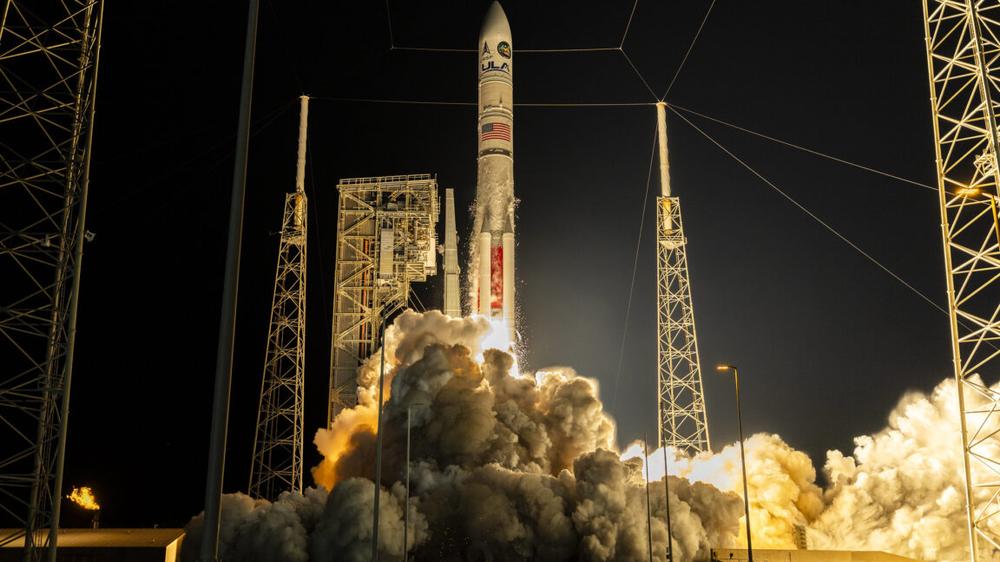Around this time each year, the US Space Force convenes a Mission Assignment Board to dole out contracts to launch the nation's most critical national security satellites. The military announced this year's launch orders Friday, and SpaceX was the big winner.
Space Systems Command, the unit responsible for awarding military launch contracts, selected SpaceX to launch five of the seven missions up for assignment this year. United Launch Alliance (ULA), a 50-50 joint venture between Boeing and Lockheed Martin, won contracts for the other two. These missions for the Space Force and the National Reconnaissance Office are still at least a couple of years away from flying.
SpaceX and ULA are the only companies with rockets certified by the Space Force to launch the Pentagon's big-ticket satellites. ULA's Vulcan rocket, which replaces the company's Atlas V, debuted nearly two years ago and successfully launched its first national security mission in August. SpaceX's Falcon 9 and Falcon Heavy rockets each have long track records of success.
The New Glenn rocket from Jeff Bezos's space company Blue Origin is also part of the Space Force's roster of rockets, but must complete at least one more successful flight before receiving military certification for the Pentagon's exclusive National Security Space Launch (NSSL) missions.
"Space is the ultimate high ground, critical for our national security. With this year's NSSL Phase 3 Lane 2 mission assignments, we continue to assure access to that high ground," said Col. Eric Zarybnisky, program executive officer for Assured Access to Space.
The military's selection of SpaceX for the bulk of this year's mission assignments was no surprise. The Space Force announced in April that SpaceX will receive the majority of Space Force launch contracts over the next several years, with ULA getting second-most, and Blue Origin eligible as a third launch provider. Space Force officials said at the time they reserve the right to reapportion missions between the three providers if one of them runs into trouble.
However, a closer examination of this year's National Security Space Launch contracts reveals some interesting things.
Paying a premium
The Space Force is paying SpaceX $714 million for the five launches awarded Friday, for an average of roughly $143 million per mission. ULA will receive $428 million for two missions, or $214 million for each launch. That's about 50 percent more expensive than SpaceX's price per mission.
While notable, these prices are close to the numbers from the last batch of contracts, when SpaceX charged $121 million per mission, and ULA's price was $214 million per launch, the same as this year. Part of this price difference could be explained by SpaceX's reuse of Falcon boosters, whereas ULA's Vulcan rocket is a disposable design.
But look back a little further and you'll find ULA's prices for Space Force launches have, for some reason, increased significantly over the last few years. In late 2023, the Space Force awarded a $1.3 billion deal to ULA for a batch of 11 launches at an average cost per mission of $119 million. A few months earlier, Space Systems Command assigned six launches to ULA for $672 million, or $112 million per mission.
The average value of SpaceX's military launch contracts remained fairly steady over the same timeframe.
ULA and SpaceX competed for military launch orders from 2020 through 2024 as part of the Space Force's NSSL Phase 2 contract. The Space Force added more money to each company's Phase 2 contract—$1.1 billion for ULA and $661 million for SpaceX—in mid-2024 to help cover a higher number of launches than the military originally expected.
Accounting for this funding surge, ULA's total haul of 26 Phase 2 launches came in at an average of $173 million per mission, still significantly less than ULA's prices this year. SpaceX's average launch price was $182 million, far more than the company's prices in 2025. Part of SpaceX's Phase 2 contract money went toward upgrades of ground infrastructure and development of an extended payload fairing for the Falcon Heavy rocket.
The launch orders announced Friday comprise the second batch of NSSL Phase 3 missions the Space Force has awarded to SpaceX and ULA.
It's important to remember that these prices aren't what ULA or SpaceX would charge a commercial satellite customer. The US government pays a premium for access to space. The Space Force, the National Reconnaissance Office, and NASA don't insure their launches like a commercial customer would do. Instead, government agencies have more insight into their launch contractors, including inspections, flight data reviews, risk assessments, and security checks. Government missions also typically get priority on ULA and SpaceX's launch schedules. All of this adds up to more money.
A heavy burden
Four of the five launches awarded to SpaceX Friday will use the company's larger Falcon Heavy rocket, according to Lt. Col. Kristina Stewart at Space Systems Command. One will fly on SpaceX's workhorse Falcon 9. This is the first time a majority of the Space Force's annual launch orders has required the lift capability of a Falcon Heavy, with three Falcon 9 booster cores combining to heave larger payloads into space.
All versions of ULA's Vulcan rocket use a single core booster, with varying numbers of strap-on solid-fueled rocket motors to provide extra thrust off the launch pad.
Here's a breakdown of the seven new missions assigned to SpaceX and ULA:
• USSF-149: Classified payload on a SpaceX Falcon 9 from Florida
• USSF-63: Classified payload on a SpaceX Falcon Heavy from Florida
• USSF-155: Classified payload SpaceX Falcon Heavy from Florida
• USSF-205: WGS-12 communications satellite on a SpaceX Falcon Heavy from Florida
• NROL-86: Classified payload on a SpaceX Falcon Heavy from Florida
• USSF-88: GPS IIIF-4 navigation satellite on a ULA Vulcan VC2S (two solid rocket boosters) from Florida
• NROL-88: Classified payload on a ULA Vulcan VC4S (four solid rocket boosters) from Florida

 Startups and the U.S. government: It’s getting complicated
Startups and the U.S. government: It’s getting complicated